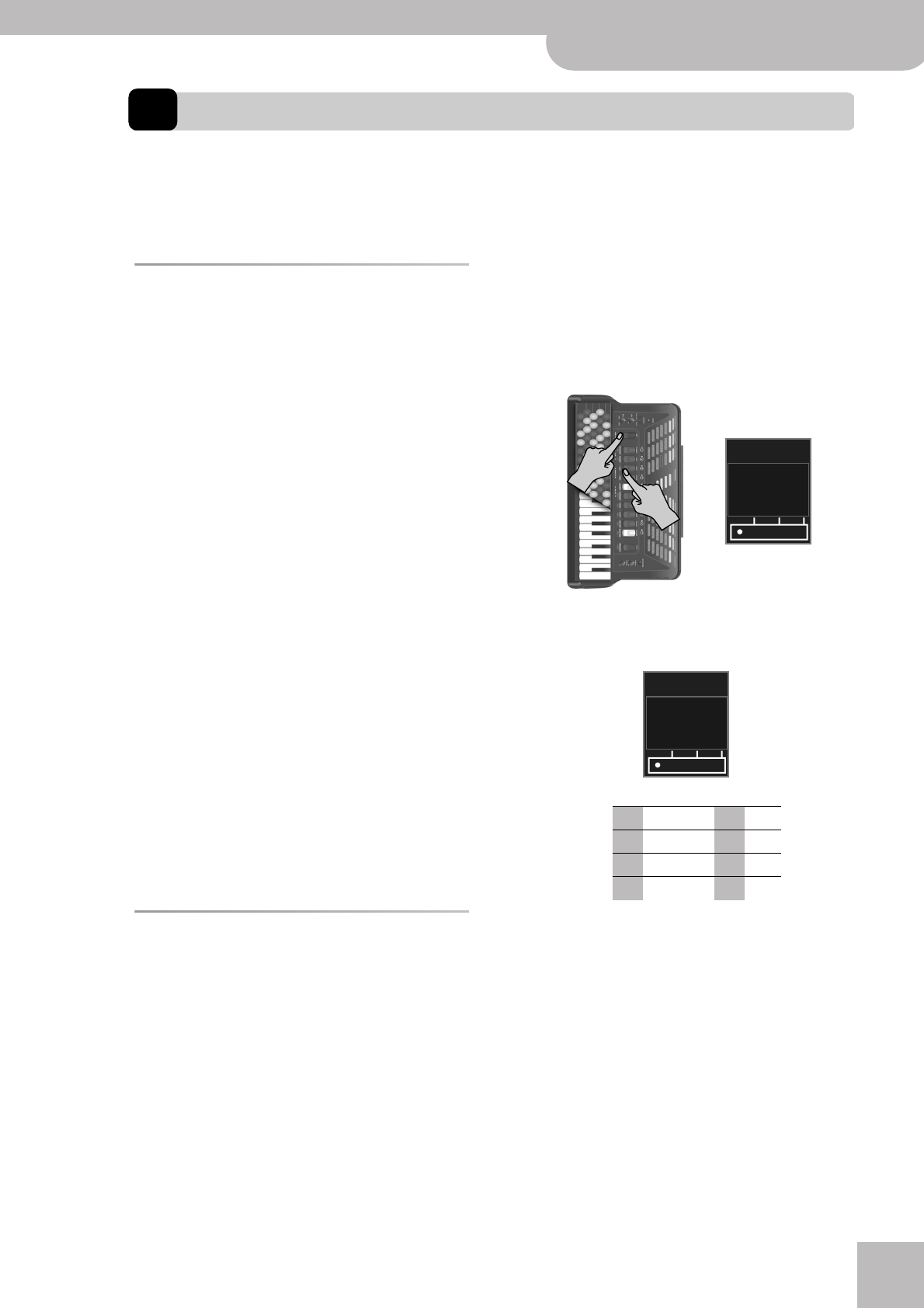
Other practical functions
V-Accordion
r
31
5. Other practical functions
After looking at the accordion and Orchestra functions, let’s have a look at the “purely electronic” functions of your FR-3.
Your FR-3 is what we call a virtual instrument. Though its physical appearance is similar to that of its acoustic ancestor,
it is based on an altogether different concept (technology) – and it can do a lot more. In this section, we will look at
functions that may be new to you but may come in handy once you know what they do and how they work.
Switching off sections you don’t
need
If, for some reason, you do not want one of the cur-
rently active parts to respond to your playing, you can
switch it off:
This may apply to any of the following combinations
and mute the corresponding keys or buttons (where
applicable):
(1) To switch off a section you do not want to hear,
press and hold any single register for a while.
Use a register in the Treble section to mute the Treble
or Orchestra part; use a Bass register to mute the
bass, chord, Free Bass, or any of the associated
orchestral parts.
The section in question must be assigned to the asso-
ciated registers. See the previous pages for how to
decide which section can be muted.
(2) To switch a muted section back on, briefly press
any of the associated registers.
Using the metronome
Your FR-3 contains a metronome that may come in
handy when you are practising new pieces, or during
your accordion classes. You can set the time signature,
the tempo and the level.
Note: The following only works if “MFN” (see p. 42) is set to “1”.
Setting up the metronome
Before using the metronome, you probably need to set
it to the desired tempo. The FR-3 allows you to save
these settings, so that you can use them again next
time you switch it on.
■Setting the time signature
To set the time signature, proceed as follows:
(1) Press and hold the [SET] register until the display
shows a parameter name, then release it.
(2) Use register [3÷√] or [4÷®] to select the following
parameter:
“MtS” is short for “Metronome TS”, i.e. the metro-
nome’s time signature.
(3) Use register [1÷–] or [2÷+] to set the desired value.
Here’s what the displayed values correspond to:
If you don’t need to change any other metronome
parameter, press the [SET] register to leave “PARAM
LIST” mode. Otherwise, proceed.
Treble and/or Orchestra + Bass + Chord
Treble and/or Orchestra + ORCH BASS + Chord
Treble and/or Orchestra + ORCH BASS + ORCH
CHORD
Treble and/or Orchestra + Bass + ORCH CHORD
Treble and/or Orchestra + Free Bass
Treble and/or Orchestra + ORCH FREE BS
Treble and/or Orchestra + ORCH BASS +
ORCH FREE BS
Treble and/or Orchestra + ORCH BASS + Free Bass
1 1/4 5 5/4
2 2/4 6 6/4
3 3/4 7 6/8
4 4/4 8 9/8
BASS
ORCHESTRA
FREE
BS
CHORD/
TREBLE
mts
BASS
ORCHESTRA
FREE
BS
CHORD/
TREBLE
4


















